Bio
Kristín Helga Gunnarsdóttir was born on November 24, 1963 in Reykjavík. After graduating from highschool she studied at the University of Barcelona and completed a B.A. degree in Spanish and Journalism from the University of Utah in Salt Lake City in 1987. She also holds a diploma from the Iceland School of Tourism from 1994. Kristín Helga has worked as a tour guide, an air-hostess for Icelandair and she was a news reporter at Channel 2 and Radio-Bylgjan from 1987 – 1988. Since 1998 she has dedicated her time to writing and journalism.
Kristín Helga’s first book, Elsku besta Binna mín (My Precious Penny), was published in 1997 and since then she has published other books for children. She was awarded the Reykjavík Scholastic Prize in 2001 for the book Mói hrekkjusvín, is a five time winner of The Children’s Choice Bookprize, received The Westnordic Children’s Literature Award in 2008 and Sögusteinn, the IBBY Iceland Children’s Book Prize in 2009.
Kristín Helga Gunnarsdóttir is married with three children. She lives in Garðabær.
Publisher: Mál og menning.
Author photo: The Reykjavík Museum of Photography.
From the Author
From Kristín Helga Gunnarsdóttir
Stories fly between people all day and into the night. People are constantly telling stories. One can for example ask oneself at night: How many stories have I heard today? The answer would probably be surprising. The stories are in the newspapers, television and on the radio. They run through phone lines, rush from one person to another in schools, at work, at the playground, in the store, at meetings and gatherings. It only takes two, a storyteller and a listener. These are happy stories, sad ones, crime stories and amusing stories, stories of heroes and love stories.
For this reason, it was not hard for me to go from journalism, where I told true stories, to the world of fiction where I could control the characters, the plot and the ending, could mould human beings and control their destinies. Perhaps, my books are for children. I don’t know. I would much rather think of them as books for families. A book is just a book. If it’s boring, no one wants to read it. If it’s interesting, it has something to say to everyone.
It is really cosy to snuggle alone with a book, delve into another world and meet both friends and enemies. The time children and grown ups spend together with a story, is also priceless, bridging gaps between generations. This brings on a precious social behaviour with discussions about life. In order for the book to survive, people have to read for children. In our fast phased, busy and often harsh society, little time is left for common reading hours. Television and computers become electrical playmates – with fewer and fewer hours spent on being together.
When the young and the old laugh together at something in a story, are shocked at something, even cry together – when the grown person sneaks by reading one more chapter after the little one has entered the dream world – that’s a book that builds bridges and gives common pleasurable moments to young and old. Such a book is a family book and that is the type of book I want to write.
As readers, children show no mercy; they are a demanding, ever-changing group of readers, but at the same time honest and eager. Grown ups can for example sit quietly and listen until the end, regardless of whether they like the story or not. They will not start wriggling in their seats, picking their noses or pinching the person sitting next to them, if the story doesn’t catch their attention. This is why I feel it is a challenge to write for children. When it is dead quiet, and the face of a little person lights up with eagerness and determination as he or she steps into the story, where she situates herself on the pages of the book and takes in the narrative – a wave of happiness rushes over the author as the purpose has been fulfilled. If a story catches a child in such a way, I do believe that an adult can feel the same thing, and thus the outcome is: A good family book.
Kristín Helga Gunnarsdóttir, 2001.
Translated by Kristín Viðarsdóttir.
About the Author
On the Works of Kristín Helga Gunnarsdóttir
Kristín Helga Gunnarsdóttir has garnered much attention for her children’s books. Since 1997 she has published five children’s books, of which two are about the girl Binna: Elsku besta Binna mín (My Precious Penny) and Bíttu á jaxlinn, Binna mín (Grin and Bear it, Penny); one about Binna’s neighbour, Mói: Mói hrekkjusvín (Big Moe); as well as two books more suited for younger readers, Keikó, hvalur í heimsreisu (Keiko, Home at Last), a richly illustrated book; and Milljón steinar og Hrollur í dalnum (A Million Stones and Shivers in the Valley), which is about the five year old girl Hekla. It is difficult to say exactly which age groups the books are meant for, as that would largely depend on the children’s individual interests. The Binna and Móa books are about unusually lively girls and boys, and the subject matter of these books is realistic. The Keiko book is very informative and appeals to children with an interest in animals. In Milljón steinar og hrollur í dalnum Kristín actively works with the folklore tradition, monsters, elves, ghosts and magic. Material like this captures the imagination of many children but not of others, as not all children seem to enjoy fantasy novels. Personally, I enjoyed all these books very much and find interesting this upsurge in the publication of children’s literature and how many authors there are like Kristín Helga, who have shown this often neglected literary form its due respect.
Like in the other books, the story in Keikó, hvalur í heimsreisu, begins with a meditation in which the message of the story is encapsulated, while also reminding the grownups that children often see things in a clearer light and it is important to not lose that childlike insight:
Maybe children will understand this adventure better than the grownups, because the children own the future. They decide what the future will be. They decide how they think about the earth, nature and the animals. They decide whether they throw away the old rules and create new ones for the world, whether they want to live with nature and at peace with it, or fight against it and never reach a harmony. (Keikó, hvalur í heimsreisu, p. 3)
The Binna novels
The first Binna novel, Elsku besta Binna mín, takes place in the summer when Binna is nine and the second book, Bíttu á jaxlinn, Binna mín, during the following winter and spring. The stories are for the most part set in a small village near Reykjavík around 1970. The name of the village is never disclosed and the world of the story is for the most part confined to Silfurgata, the street where Binna lives, along with 20 other children. The street is situated by a grassy field, so the kids don’t have to go far to be out in nature.
The story gives a fresh insight into the world of the key chain-child because Binna’s mum works outside the home unlike the other mums in the street, “the apron mums” as Binna likes to call them. Binna is quite happy with this arrangement and enjoys being in charge of the house, along with Þorbjörg, her dog. The house is an adventure castle and Þorbjörg or Tobba “the house dragon” guarding it. Binna sometimes gets into trouble however, acting without thinking, and causing her mum to feel guilty and talk about having to quit her work. Binna doesn’t want that at all and tries to keep from wreaking too much havoc. Her mum also sends her away to the countryside in the first book, to her grandparents in the Valleys, and the countryside chapters widen the world of the book and keep it from becoming monotonous.
Binna is the protagonist and the narrator of the story. She is always with her three friends, Villa, Beta and Gunna. Other kids from the street also feature in the book, including the requisite bullies. Binna’s dad works as a land surveyor and spends much of his time up in the mountains, while her mum works for a shipping company. Then there is Binna’s sister Mímí, who is a typical teenager. Other characters are Binna’s grandparents in the country who are old-fashioned country people; a complete opposite of Binna’s other grandparents in the city.
All the characters, apart from Binna, are mostly stereotypical representatives of certain values. Binna is very independent and imaginative, which comes through in her compulsive collecting for scientific purposes. Her imagination and experimentation can sometimes cause problems however, and as much as Binna’s mother understands her, she stresses Binna’s responsibility for her own actions and that she needs to apologize and remedy her mistakes. Binna suffers a campaign of bullying at school which she refers to as “Binnubann” (“a Binna ban”), mostly fuelled by her wearing a different coat from the other girls. In that battle, she just grins and bears it like her granddad had taught her, and she has the upper hand in the end. She discovers that it is O.K. to be different. Much is also made of the value of friendship in the stories and Binna and her girlfriends stick firmly together and support each other in a crisis, for example when Binna wets her sleeping bag when they spend a night in a tent. Binna’s grandmother in the country is incredibly caring and forgiving and her kindness is a big influence on Binna. The grandparents in the country fit the countryside ideal; they are stress-free and have a closer relationship with nature than her work-weary parents. In some ways they symbolize a vanishing era, as they move away from the farm to a block of flats in Reykjavík when their land is bought by a rich city slicker who plans to tear down the farmhouse to build a summer cabin there.
The Binna stories consist of introductory chapters and many shorter chapters, each of which tells a separate story. Most of them describe the pranks and troubles of Binna and her girlfriends, for example a sheep sorrel eating contest which ends at the emergency ward, nicking from a neighbour’s yard and a boot sale in which Binna gives away her parents’ prized belongings. In between are more serious chapters which describe Binna’s stay in the country, how she experiences the holy atmosphere of Christmas, and how her dog goes missing during a family trip. Other incidents include when her dad goes missing in a storm up in the mountains and when she is accidentally left behind tied to a pole in a game of cowboys and Indians, far away from her home. But all ends well and many chapters conclude with Binna lying down to sleep, full of gratitude and joy over life.
The character of Binna is very lively and honest, she is resourceful and whenever she does something wrong, it is always in good faith. The reader sympathises with her, but is at the same time made aware that children’s games can have serious consequences. The stories are funny without going to extremes. The style is very lively and the conversations natural. Each chapter tells an individual story in a focused way, without any digressions or breaks in the action. The language is especially varied and rich and is in no way simplified or stylised. Margrét Laxness’s illustrations are filled with life and exude warmth, like the text itself.
Big Moe (Mói)
Mói, Binna’s neighbour in Silfurgata is nine. He is a bully. I have wondered whether the term “bully” was still in use, or whether the bullies were diagnosed as suffering from hyperactivity or A.D.D. today. My conclusion is that the children I know still speak of bullies. The story follows the same timeline as the Binna books, set about 25 years ago, when cowboys and Indians dominated boys’ games. Stories of games like that certainly evoke memories in the dads who read the books, and the idea of the cowboy Byssu-Jói, Mói’s imaginary friend, makes this inner world seem very real and powerful. Apart from Byssu-Jói, the three-meter tall cowboy who is Mói’s companion, we have Gói, the secret friend that he sleeps with at night. In other words, Mói, despite his spectacular pranks, feels quite small inside. Like Binna he acts without thinking, but not out of malice. The bully is therefore not a problem case, the main idea being that he will grow out of being a troublemaker.
The method of storytelling is the same as in the Binna books and the voices of Binna and Mói sound similar. They both speak in the first person and the story is told with gusto, a description of one incident often sparks memories of other similar instances. Mói’s point of view is humorous; all he is doing is just experimenting with a few things. But Mói’s adventures are more thrilling than Binna’s. He gets caught up in a robbery and a police case, his life is saved by a rescue squad and he visits the president himself. Binna is more preoccupied with having a boot sale and baking mud cakes, so there is a noticeable gender difference here. Maybe the prankster genre is more suited to boy books? There is certainly more action in the book about Mói, both in terms of subject matter and in the illustrations. The illustrations are by Margrét Laxness, like in the Binna books, but here she chooses to integrate the pictures more into the story, placing them in between the text, as well as decorating the chapters with symbols and decorations. In my opinion, the illustrations play a larger role in this book than in the Binna books, and are stronger and more memorable.
Keiko, Home at Last
Like many people, I was fed up with all the publicity surrounding Keiko the whale. Therefore I was afraid that Kristín Helga’s story would be one of those single-use books, written to make a profit. Fortunately, this turned out not to be the case, and reading the story, I discovered how little I in fact knew about this famous whale and about whales in general.
The book is a picture book and the illustrations are by Hallgrímur Ingólfsson and Aðalsteinn Svanur Sigfússon. Yet there is a great deal of text on its 34 pages, and the font is also fairly small. This is a frame narrative, in which the narrator creates an imaginary setting: the zoo in the city of Lúmín in the land of Lúmínala. In the beginning of the story she leads a child through the zoo and together they look at a polar bear, a lion, a gorilla, a penguin and a whale. The zoo is in a southerly part of the world, the heat is almost unbearable and the animals are very uncomfortable. In addition to imagining the visit to the zoo, the narrator asks the child to close her eyes in the zoo and visualize all the animals in their right habitat, free, proud and happy.
The imagery of the text is very much geared towards the senses, the contrasts are sharp, and thoughts of a cold sea have more poignancy in the heat. On every page there are illustrations which emphasise this contrast even more; by showing the same animal first in the zoo and then in its natural habitat. After having watched the orca whale swim a round after round in a small pool, and listened to his sorrowful wailing, the narrator sits down on a shaded bench with a Popsicle and tells the child the story of the Icelandic orca whale. This narrative is in the third person and when it ends, we go back to the zoo and the first person narrative. It is now closing time at the zoo and after their discussion on the bench; the narrator and her listener leave the zoo.
The story of Keiko’s life is put forward as a fairy tale: Iceland is a volcanic island with a charming little hunting community where people live at peace with nature. An orca whale is caught near Iceland when he is two years old, taken from his family, tossed between zoos all over the world, then relocated to a marine rehabilitation centre after finding fame and fortune in the movies. Eventually, he is taken back to his home after 20 years and has to learn to survive in the wild again. On the surface, the fairy tale ends well and Keikó reclaims his freedom, but on closer inspection however, this is not a real freedom.
The framing device of the zoo offers some kind of a link to reality, and there are parallels between the sad fate of the animals in the zoo in Lúmín and the story of Keikó, who suffers all kinds of traumas in zoos, ranging from bullying by other orca whales, to hunger, sickness and hard labour as an entertainer. Keikó is not depicted as human-like in the story, so the reader has to try to translate his emotions from his sounds, movements and physical appearance. The child listening to the story does not accept that zoos are an undisputable and natural phenomenon and asks the question that were forgotten in all the self-congratulatory frenzy over the freeing of Keiko
Even after Keiko’s wonderful diplomatic role is explained, and his long-awaited rest home at last, the child insists: “Did he ask to get to travel? You ask, puzzled.” (Keikó, hvalur í heimsreisu, p. 33)
The child’s arguments are hard to refute and her voice continues to resound after the book is closed. This story brings up many ethical questions about the co-habitation of man and nature and holds each one of us responsible.
A Million Stones and A Shiver in the Valley
Milljón steinar og Hrollur í dalnum is about the seven year old Hekla and describes her adventures in the country at her grandparents’ farm, where she stays with her sister Katla and the dog Eyjólfur, while her workaholic, house-building parents go on a mini-break to Paris, “to cheer themselves up”.
Hekla’s grandparents are not farmers, but have bought a deserted farm, a retreat from Reykjavik, which grandpa refers to as “Rykvík” (“Dusty-bay”). On the estate, Bjarg, he enjoys life and is growing a forest. Grandma is not as susceptible to the bucolic splendour and spends more time in Reykjavik. The old people in this story, as in many of others, are closer to nature than the younger ones and have more time for the children. Granddad invents stories about trolls, monsters, elves and ghosts, which are connected to the area surrounding the farm and grandma tells Hekla classic fairy tales about kings and queens, improving them a little bit. Snow White does not, of course, marry the prince right away, even if he has kissed her and Hansel and Gretel’s father and stepmother go to jail and a rehabilitation program for kicking their children out of their homes.
The grandfather’s stories are, like folklore, plausible in the context of this environment and Hekla believes them, despite the fact that her grandpa does not expect her to, and her grandma is constantly telling him off for making these things up. As the story is told from Hekla’s point of view, the natural and the supernatural merge. She spots the monster in the river that her grandpa has told her about so that she will not be tempted to go near the river, and as the story progresses, the monster constantly rears its two heads. Hekla’s fear of the monster is almost unbearable, yet she asks her grandpa to tell her the story one more time. According to the story, the monster is a spellbound girl. Grandpa explains how the spell can be broken and Hekla follows the instructions, goes out without permission at midnight, throws a stone into the river and sets the girl free.
Hekla conquers her fear, using the methods of the fairy tale. Good defeats evil and a balance is struck between imagination and reality.
The story is written in an entertaining way, like the previous ones. Kristín Helga is conscious of her use of the folklore tradition and has found plenty of material to work from there. She combines various types of folklore and packs the story with literary motifs. The message inherent in folklore of respect for nature is championed here, as well as the pedagogical value of the stories, as they often are intended to steer children away from danger. Moreover, the story emphasises the value of the family, Katla feels better in a small block of flats than in the new single family house, before her parents increase their overtime hours drastically. One sometimes gets the sneaking suspicion that children’s books are written not least with adult bedtime story readers in mind!
© Inga Ósk Ásgeirsdóttir, 2001.
Translated by Vera Júlíusdóttir.
Awards
2018 – Fjöruverðlaunin, the Icelandic Women's Literature Prize: Vertu ósýnilegur: Flóttasaga Ishmaels (Stay Invisible: Ishmael‘s Flight)
2009 – Sögusteinn, IBBY Iceland’s Children’s Literature Prize: For her writings for children
2008 – The Children’s Choice Book Prize: Fíasól er flottust
2008 – The West-Nordic Children’s Literature Prize: Draugaslóð (Ghost Trail)
2008 – Second prize in a ghost story competition hosted by Mýrin Children’s Literature Festival and Forlagið Publishing: “Rauð húfa” (Red Hat)
2006 – The Children’s Choice Book Prize: Fíasól á flandri (Fíasól Travels)
2005 – The Children’s Choice Book Prize: Fíasól í hosiló (Fíasól in Hosilo)
2004 – The Children’s Choice Book Prize: Strandanornir (The Witches from Strandir)
2004 – IBBY Iceland Award: Strandanornir (The Withces from Strandir)
2002 – The Children’s Choice Book Prize: Í Mánaljósi (Moonlight)
2001 – Reykjavík City Children’s Literature Prize: Mói hrekkjusvín (Big Moe)
Nominations
2017 – The Icelandic Booksellers‘ Prize: Vertu ósýnilegur: Flóttasaga Ishmaels
2017 – The Icelandic Literature Prize: Vertu ósýnilegur: Flóttasaga Ishmaels
2017 – The Astrid Lindgren Memorial Award
1999 – Reykjavík City Children’s Book Prize: Milljón steinar og hrollur í dalnum (A Million Stones and Shiver in the Valley)

Obbuló í kósímó : Nammið (Obbuló in Cozyworld : the sweets)
Read moreOddný Lóa Þorvarðardóttir býr í Kjóamóa þrjúhundruð og sjö. Hvaða krakki getur sagt það? Enginn. Obbuló á heima í Kósímó. Eru sumir dagar leiðinlegir? Gleymir fólk að sækja börn í leikskólann? Er hollt að troða í sig miklu nammi? Spurningunum er svarað í þessari bók.. .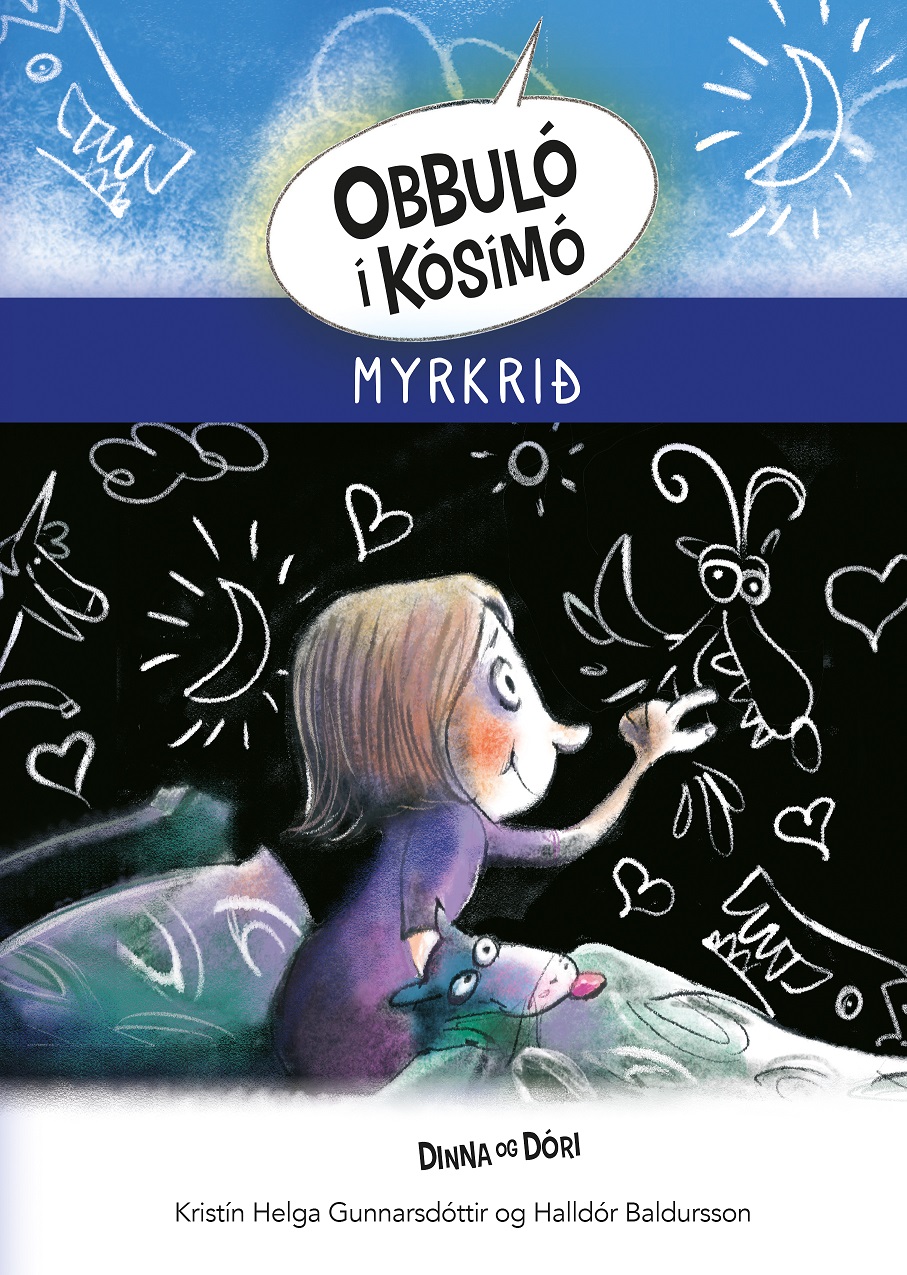
Obbuló í kósímó : Myrkrið (Obbuló in Cozyworld : the darkness)
Read moreOddný Lóa Þorvarðardóttir býr í Kjóamóa þrjúhundruð og sjö. Hver er hræddur við hlussulegt tramp? Býr einhver í ísskápnum hjá Símoni kennara? Hvað gerir gat á myrkrið hjá Obbuló? Þessum spurningum og öðrum er svarað í bókinni.. .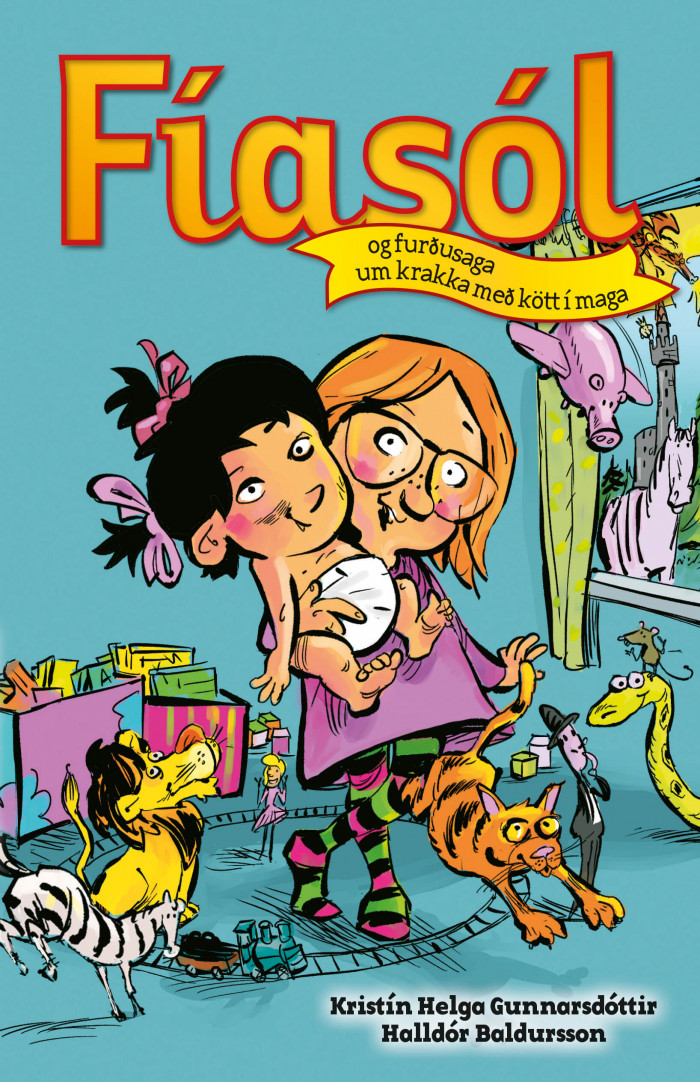
Fíasól og furðusaga um krakka með kött í maga (Fíasól and the Strange Story about a Kid with a Cat inside his Stomach)
Read more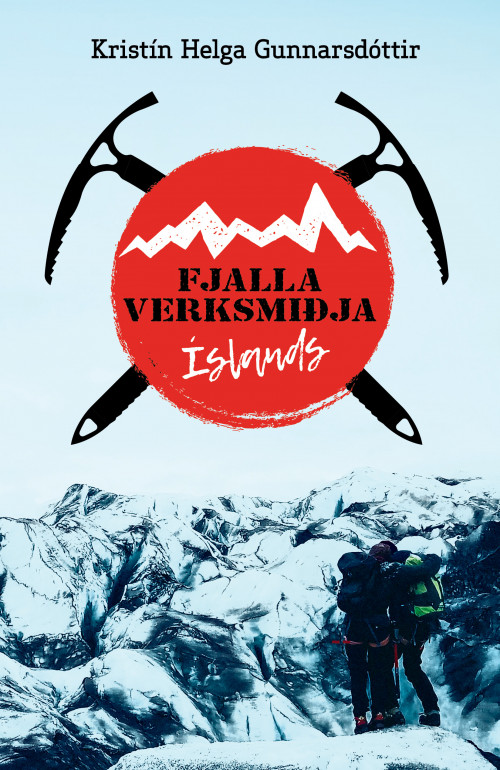
Fjallaverksmiðja Íslands (Iceland's Mountain Factory)
Read more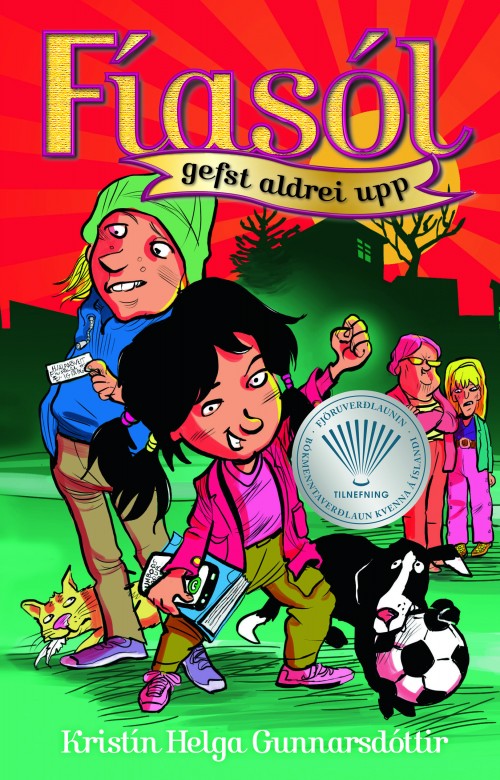
Fíasól gefst aldrei upp (Fíasól never surrenders)
Read more
Vertu ósýnilegur: flóttasaga Ishmaels (Stay Invisible: Ishmael‘s Flight)
Read more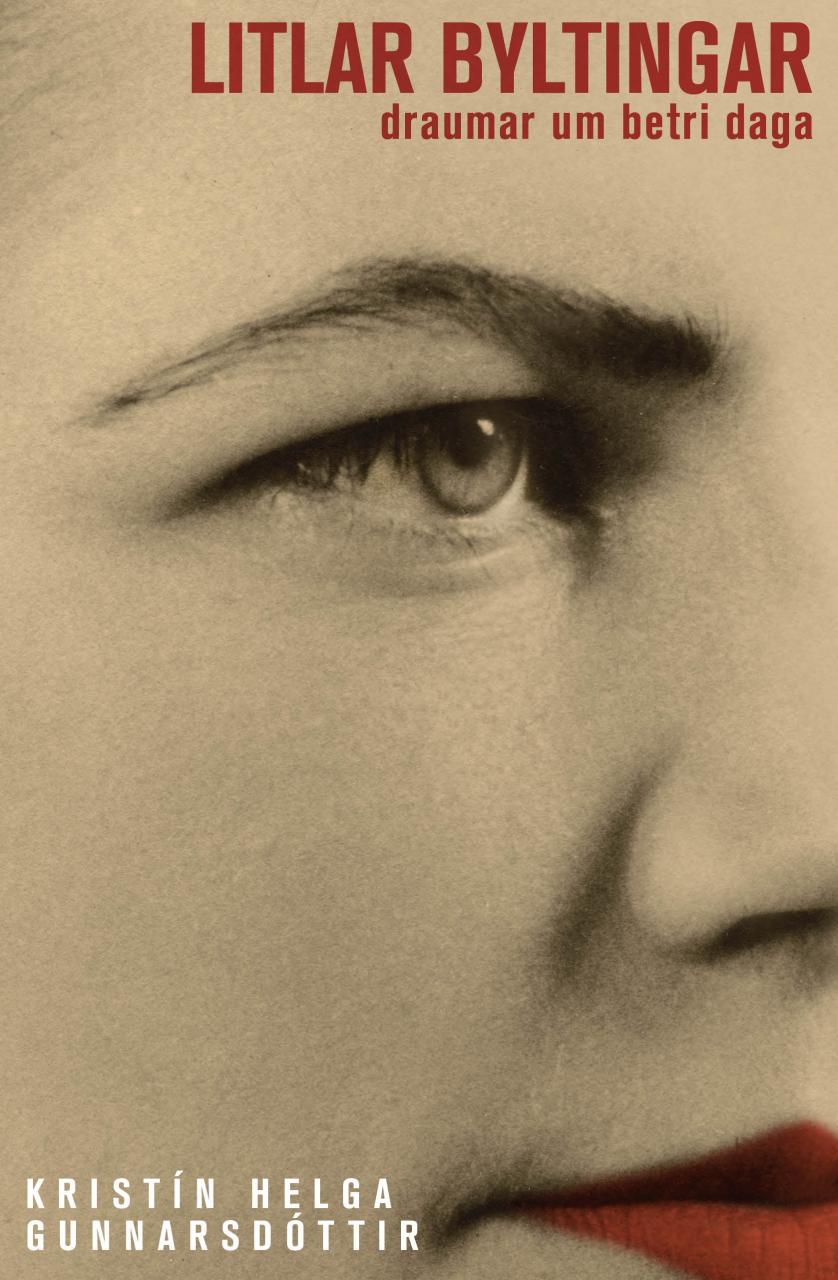
Litlar byltingar: draumar um betri daga (Minor Revolutions: Dreams of Better Days)
Read more
Mói hrekkjusvín: landsmót hrekkjusvína (Mói the Prankster: The National Prankster Conference)
Read more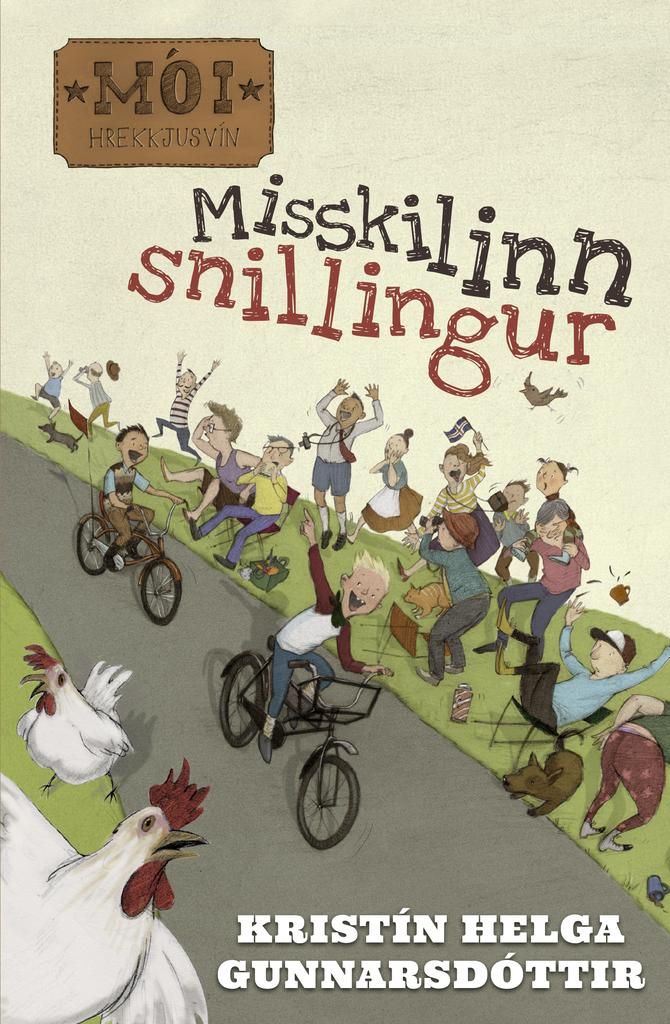
Mói Hrekkjusvín: misskilinn snillingur (Mói the Trickster: Misunderstood Genius)
Read more
